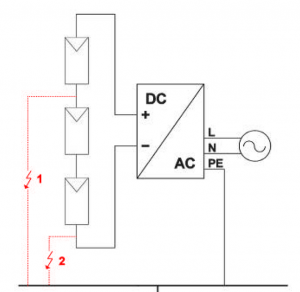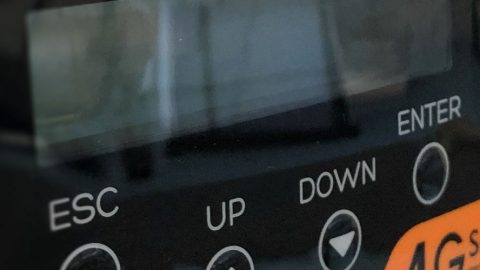How does an isolation fault occur and how do you resolve it?
In humid weather, the number of incidents involving systems with isolation faults increase. Tracking down such a fault is only possible at the moment it occurs. Often there will be an isolation fault in the morning which sometimes disappears as soon as the moisture resolves. In some cases, it is hard to figure it out what causes the isolation fault. However, it can often be put down to shoddy installation work.
How does an isolation fault occur?
If the shielding on the wiring is damaged during fitting, a short circuit may occur between the DC and the PE (AC). This is what we call an isolation fault. Besides a problem with the cable shielding, an isolation fault could also be caused by moisture or a bad connection in the solar panel’s junction box.
The error message that appears on the inverter screen is “isolation error” or “isolation fault”. For safety reasons, as long as this fault exists, the inverter will not convert any power as there may be life-threatening current on the conductive parts of the system.
As long as there is only one electrical connection between the DC and the PE, there is no immediate danger since the system is not closed and no current can flow through it. Nevertheless, always exercise caution because there are hazards:
1. A second short-circuit to earth has occurred PE (2) creating a short-circuit current through the modules and wiring. This will increase the risk of fire.
2. Touching the modules may lead to severe physical injuries.

Image: possible locations for closing of direct current to earthing.
Tracking an isolation fault
1. Switch off the AC connection.
2. Measure and make a note of the open-circuit voltage of all strings.
3. Disconnect the PE (AC earth) and any earthing from the inverter. Leave the DC connected.
– Red LED lights up to signal an error
– Isolation fault message is no longer displayed because the inverter can no longer take a reading between the DC and AC.
4. Disconnect all DC wiring but keep the DC+ and DC- from each string together.
5. Use a DC voltmeter to measure the voltage between (AC) PE and DC (+) and between (AC) PE and DC – and make a note of both voltages.
6. You will see that one or more readings are not showing 0 Volt; these strings have an isolation fault.
The voltages measured can help trace the problem.

For example:
String with 9 solar panels Uoc = 300 V
PE and +DC (V1) = 200V (= modules 1, 2, 3, 4, 5, 6,)
PE and –DC (V2) = 100V (= modules 7, 8, 9,)
This fault will be located between module 6 and 7.
CAUTION! Touching non-insulated parts of the string or frame could cause severe injury. Use appropriate safety gear and safe measuring instruments.

